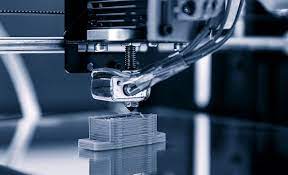Virtual reality (VR) is increasingly becoming a powerful tool in engineering and manufacturing. It enables you to visualize 3D CAD models at scale in an immersive simulated environment.
When designing for metal 3D printers, keep in mind that channels and holes need escape structures to remove unmelted powder. Also, walls angled more than 0 and 45 degrees in relation to the build platform will require support structures.
Designing for 3D Metal Printing
Creating a new design or model that is ready to be printed in metal requires careful consideration and attention to detail. Fortunately, there are tools available that will help streamline the process and reduce the time required to bring your idea to life.
Metal 3D printing uses laser-heated powdered metals to build objects layer by layer. The material is then melted and fused together in order to form the desired shape of the part. There are a few different ways that this can be achieved, with the most common being Selective Laser Melting (SLS) or Direct Metal Laser Sintering (DMLS).
In these processes, a layer of powdered metal is heated using a laser before the next layer is deposited on top. This is repeated until the desired part is complete. The parts are then cooled down and the excess powder is removed manually. The remaining part is then cleaned and treated to make it ready for use.
Unlike plastic 3D printing, metals are typically printed with support structures. These are needed to hold the part in place and conduct heat away from the print area. For this reason, it is important to make sure your model has an adequate wall thickness so that the structure of your part will be strong and sturdy.
It is also worth bearing in mind that curved surfaces can be difficult to print, so it may be necessary to redesign them into a more straight-sided shape. In addition, if your part has angles that are greater than 45 degrees with respect to the base plate, it will need supports to prevent them from warping.
Designing for Strength
As 3D printing continues to expand in availability and capabilities, many makers will turn to metal additive manufacturing for more demanding projects. It is important to consider the strengths of the various available materials when designing for AM.
It is important to keep in mind that metal AM does not produce parts with the same level of precision as conventional machining or casting. This should be kept in mind when creating a design, as attempting to use an existing design or modifying one intended for conventional processes can result in a part that does not perform the way the user envisioned.
In addition, it is advisable to design the minimum wall thickness possible for your geometry. This will help to ensure that the part can handle any stresses that may develop during the building process and during post-processing. Several topology optimization programs are available for this purpose, including Altair’s OptiStruct,nTopology,Autodesk Fusion 360 with Netfabb,Siemens NX / Solid Edge and Dassault Systemes SolidWorks.
It is worth noting that even though the maximum build size of a metal AM machine is quite large, a printed part can still be subject to significant stresses as it builds. These are due to the differential cooling between layers, which can cause a print to want to curl up and distort. This is why supports are required for areas like holes, angles and overhangs to draw heat away from the new layer and anchor it down onto the base plate. These supports, however, must be removed after the print has been completed, adding to the cost and time of production.
Designing for Durability
3D printed parts are much stronger than traditional manufacturing methods, enabling designers to create organic shapes and lightweight structures that would be impossible or cost prohibitive to make by other means. However, printing metal presents a number of additional challenges that engineers must consider when designing for 3D printing, in order to get the best results.
However, these supports add to the overall build time and are expensive to produce as they require extra material to build. For this reason, it is always preferable to avoid creating areas that require a large amount of support. If this is not possible, it may be worth looking into a method such as sintering, where loose steel powder can be blasted off the printed part after fabrication to remove support structures and achieve a more polished finish.
Designing for Overhangs
A common challenge when 3D printing metal is managing overhangs. These are sections of the model that stick out from the vertical plane, and can pose a risk of collapse during printing. Depending on the geometry of the overhang, it may be possible to resolve the issue by design adjustments, reorientation, or using a support structure. It’s also possible to minimize the need for supports by ensuring that the largest face of a section lies on the print bed. In some cases, it is necessary to split a complex model into multiple components and join them post-print using glue or welding.
With careful planning, it’s possible to design for overhangs that are both strong and attractive. For example, if you have a long, angular overhang, consider adding a series of double-angled chamfers that meet at the base to create a point, which provides a stronger and more attractive alternative to a straight edge. This trick is something that sculptors have been using for centuries, and can be applied to virtually any type of design.


